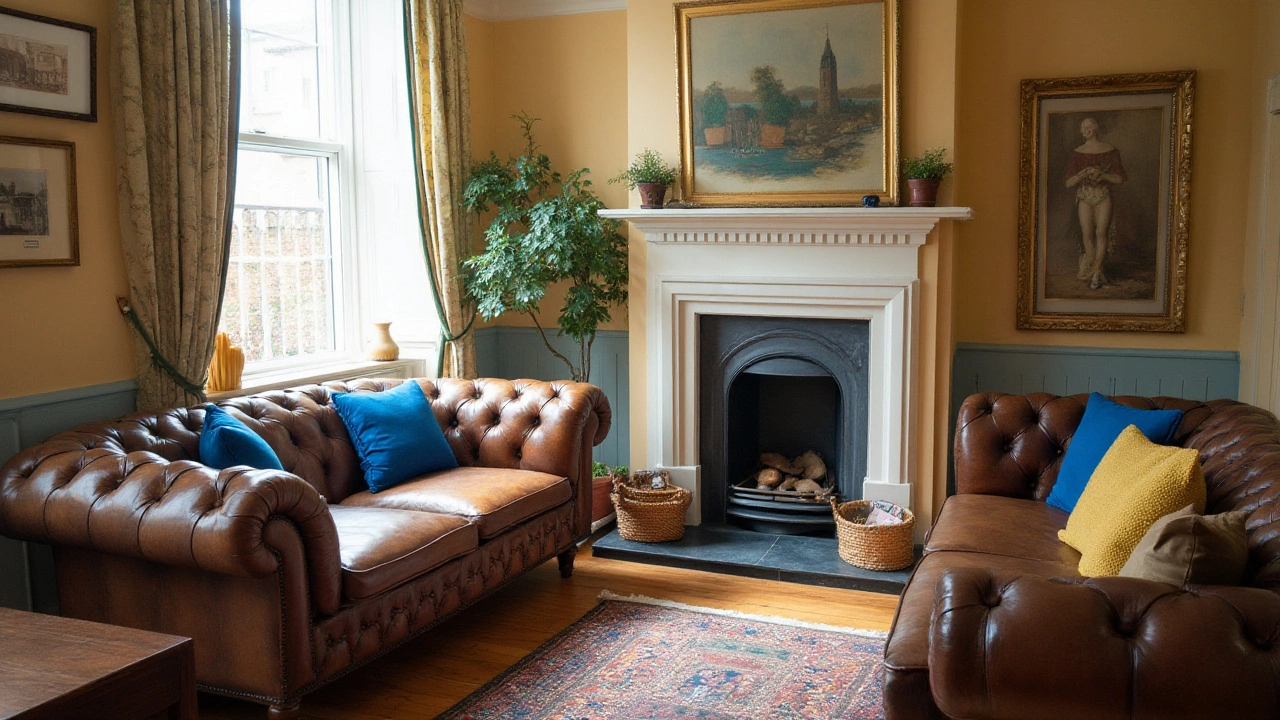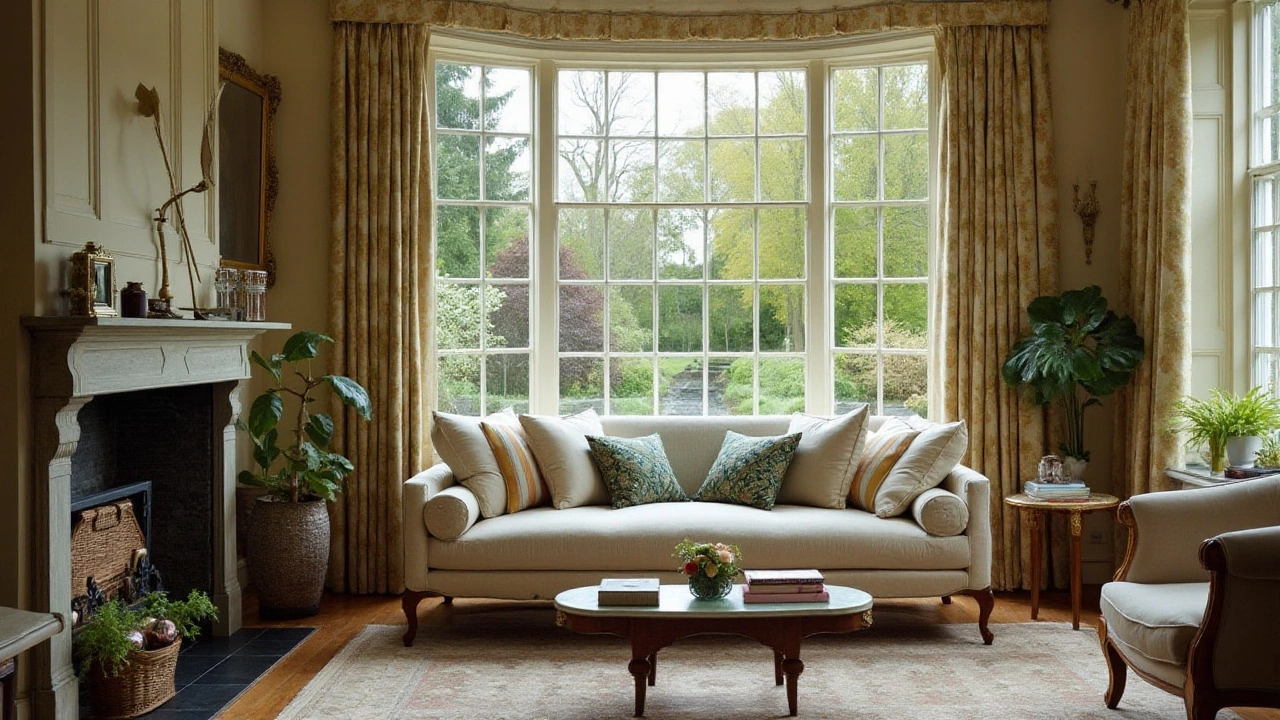How to Refresh Your Couch with New Cushions: A Complete Guide

Ever glanced at your couch and wished it looked a little fresher? Ditching the entire piece of furniture might seem like jumping the gun when sometimes, the secret to rejuvenating your space lies in an often-overlooked element: the cushions. Replacing these can be a smart and economical way to bring a splash of new life to your surroundings.
Before you dive in, though, it's vital to know the basics. Not every couch is created equal, and understanding the construction can guide your cushion makeover process. From selecting the right cushion materials to deciding between a DIY approach or seeking professional help, each choice matters. And while on the surface it might seem like a small task, it involves its own share of planning.
Let's explore how you can make the most of this transformation. From budget to care tips, we'll cover the essentials so you can lounge in style and comfort.
- Understanding Couch Construction
- Choosing the Right Cushion Materials
- DIY vs Professional Cushion Replacement
- Cost Considerations and Budgeting
- Caring for Your New Cushions
Understanding Couch Construction
When contemplating a revamp for your couch, it becomes pivotal to dive into the intricate world of its construction. A couch isn't merely an assembly of cushions and fabrics; it's an embodiment of craftsmanship meant to buffer years of wear and tear while providing ample comfort. Recognizing the anatomy of your couch can significantly influence your decision-making process when replacing the couch cushions.
The bones of any couch are its frame, typically crafted from wood such as hardwoods like oak or plywood. Solid frames not only ensure a long-lasting foundation but also impact the resilience and shape of the cushions you choose. Using tools to gently push the couch's surface can reveal more about its skeleton beneath the upholstery, contributing to smarter choices when selecting new fillers or fabrics.
Moving beyond the frame, the suspension system holds equal importance, as it determines the couch's overall comfort. Sinuous spring constructions or eight-way hand-tied systems are usually employed to provide a cushioned support layer. The durability and give of these elements can determine how plush or firm your new cushions will feel once in place. Cushioning, often involving a combination of foam, feathers, or batting material, rests atop this suspension, and matching it with an ideal filling option can help enhance or restore the original comfort level effectively.
The upholstery envelops these internal components, acting as a protective layer and visual statement. Fabrics like cotton, synthetic blends, or even leather influence the choice of replacement cushions in terms of texture, durability, and aesthetic harmony with the existing design. A commonly overlooked aspect is the stitched seams, which can reveal longevity and style cues crucial when planning your cushion swap. Aligning the cushions with these details can make the alteration seamless.
"Paying attention to the anatomy of your couch isn't about paying homage to complexity; it's about understanding comfort." - Furniture Design Expert, Lorna King
Finally, get to know the size variables. Armrest height, seat depth, and backrest angles guide the dimensions, making precise measurements essential. Detailed attention to these specifics ensures that your selected cushions fill the gaps without awkward sagging or overstuffing. You'll want the new additions to fit snugly, mirroring the original comfort experience, but with an added layer of rejuvenation.
Choosing the Right Cushion Materials
When it comes to updating your couch, choosing the right materials for your couch cushions can make all the difference. Let's face it, cushions are not just decorative; they play a crucial role in the comfort and longevity of your sitting area. First on the checklist is understanding the types of materials available and the kind of experience they provide. A popular option is foam, known for its resilience and versatility. High-density foam offers robust support, ideal for those who love firm seating. For the plush lovers, low-density might be the go-to, but beware of its tendency to compress more quickly over time.
An alternative worth considering is memory foam, designed to contour and cradle your body. While it's often associated with mattresses, memory foam cushions can offer a luxurious experience, albeit at a steeper price point. Another interesting choice is fiberfill, often utilized for outdoor seating. It's lightweight and affordable, which might appeal if you're on a budget or wish to swap cushions frequently to keep up with changing design trends.
Let’s not overlook natural materials, either. Down and feather cushions provide a cozy, sink-into-the-seat feel that's hard to beat, but they do require a bit more maintenance to keep them looking spry. For the eco-conscious, there are also many sustainable options, such as organic latex, which offer a similar comfort level to natural materials without the ethical concerns. Selecting the right material might seem daunting, but consider what function your couch serves in your life. A family with young children might benefit from materials like microfiber that offer stain resistance, while a bachelor pad might opt for sleek leather, known for its easy cleaning and sophisticated look.
According to home furnishing expert and author, Bob Vila, “The key to long-lasting cushion performance lies in selecting materials that align with lifestyle needs as well as aesthetic desires.”
So, engaging a professional or doing some soul-searching about your room’s vibe can save you from headaches down the line.Furniture upgrade, after all, is about both function and form.
Before you rush to a decision, consider testing small fabric samples in your home environment. This helps determine how they react to your lighting, existing furniture, and everyday use. In some cases, investing in higher-quality materials upfront can lead to cost savings over time by reducing the need for frequent replacements. Armed with this insight, you're one step closer to making an informed decision that complements both style and utility perfectly. Don’t forget, whatever materials you choose should make sitting on your couch feel like a dream while also bringing a bit of your personality into the space.

DIY vs Professional Cushion Replacement
Deciding between a DIY approach or hiring a professional for cushion replacement is a pivotal choice that influences the entire transformation process. The DIY route might appeal to the creatively inclined seeking a hands-on project and wishing to save money. It's certainly feasible with the right tools, materials, and time. Many find satisfaction in tailoring their cushions, choosing fabrics and styles that express their personality, turning a mundane object into a unique centerpiece.
A DIY task begins with assessing the couch's framework. Measure twice to ensure precise fitting and take note of the cushion shape. Acquire high-density foam, batting for extra softness, and fabric that's both durable and in harmony with your living space's aesthetic. Sewing skills come in handy, though there are numerous tutorials and guides accessible online for assistance. It is crucial to have a quality staple gun or a sewing machine, and patience to navigate this meticulous task.
On the flip side, employing a professional comes with its perks, offering both expertise and convenience. Professionals have a knack for mending complex issues, guaranteeing a refined finish that's difficult to match alone. If details and precision are paramount, investing in a skilled craftsman may prevent potential headaches.
Furniture upgrade experts often have access to specialized materials and techniques not widely available. It can result in a more durable product, which over time, could justify the initial expense. For those particularly attached to family heirlooms or valuable furniture, professional restoration might be the peace of mind needed. As Michael Linwood from 'The Home Artisan Weekly' put it, "A professional touch can rejuvenate a piece of furniture beyond its original beauty, offering both spirit and integrity."
Cost is a critical factor in this decision. A DIY project may be lighter on the wallet initially, but it's vital to weigh this saving against time and the learning curve involved. Conversely, professional services come at a higher cost, but they promise expertise, thereby mitigating risks and errors. Evaluating the lifespan and intended use of the couch cushions can help conclude which route offers better value.
Table summarizes some key differences:
| Aspect | DIY | Professional |
|---|---|---|
| Cost | Low to moderate | High |
| Time Investment | High | Low |
| Skill Level | Beginner to Intermediate | Expert |
| Customization | High | Moderate |
Ultimately, the choice rests on individual priorities and constraints. Whether a DIY enthusiast or someone who values professional reliability, knowing the benefits and drawbacks of each method makes selecting the right pathway clearer. Embracing the cushion revolution could be as simple or in-depth as you make it!
Cost Considerations and Budgeting
When it comes to replacing couch cushions, weighing the costs is not only practical but an essential step in deciding if this project is the right move for you. The expenses can vary widely depending on numerous factors such as the quality of materials, the size of your couch, and whether you choose to DIY or hire a professional. This financial fluctuation gives homeowners the freedom to adjust plans according to their needs and wallet. Firstly, let’s examine the expenses related to materials. The core of any cushion—the foam—is likely the largest cost factor. Foam quality ranges from basic to high-density memory foam, with prices escalating as comfort and durability levels rise. Opting for high-end memory foam can feel like a splurge, but it could improve the longevity and comfort of your couch, offering potential long-term savings.
Let’s not forget to factor in the fabric. The choice of covering material can also significantly sway your budget. For example, while cotton and polyester are relatively budget-friendly, exotic fabrics like silk or velvet gobble up a larger portion of your budget. However, keep in mind that durability often aligns with price, hence a little research on fabric upkeep could save future replacement costs. If sustainability is on your priority list, consider eco-friendly fabrics such as organic cotton or linens which are gaining popularity in the home decor world. To gauge a reasonable budget, it’s helpful to consider a quotation from a respectable industry source.
According to Martha Stewart Living: ‘Pillow forms and custom upholstered cushions can range from $50 to upwards of several hundred dollars each. It's about figuring out what the budget will allow and what gives the best bang for your buck.'This insight illustrates the need for planning and perhaps, even a bit of savvy negotiation.
Another pivotal decision revolves around labor—going DIY or hiring a professional upholstery service. While tackling the project yourself can cut costs, it necessitates time, skill, and tools which might not be readily available to everyone. On the flip side, professional services provide skill, quality, and efficiency but usually at a higher financial outlay. The choice here hinges on your confidence in handling the logistics and craftsmanship required.
Lastly, any budget plan should consider hidden costs. Zippers, thread, and unexpected repairs could pop up unannounced, straining your budget if not prepped for. It’s wise to keep an additional 10-20% of your planned budget aside to manage these surprises smoothly. Are long-term savings feasible? Yes, because refreshing your cushions instead of buying a new couch impacts the environment less and generally comes with a smaller price tag. A balanced perspective on costs ensures you revitalize your space without feeling the pinch.

Caring for Your New Cushions
Once you have taken the plunge and replaced your couch cushions, it is important to give them the care they deserve. This ensures they not only last as long as possible, but also maintain their appearance and comfort. A good care routine starts with understanding the materials your couch cushions are made from. Different materials have unique requirements—whether it's fabric, foam, or feathers—so knowing what's inside is key. For example, if you have opted for foam cushions covered in fabric, regular vacuuming is essential to keep dust and dirt at bay. To avoid flattening the cushion structure over time, rotate and fluff them regularly. This can be as simple as giving them a good shake once a week. Remember, prevention is better than cure, so consider applying a fabric protector to shield against spills and stains.
When it comes to cleaning spills or accidents, immediate action is crucial. This is even more important if you have children or pets who can, sometimes unknowingly, be the source of these occurrences. Always blot any liquid stains immediately with a clean, dry cloth—never rub, as this can push the spill deeper into the fabric fibers. For more stubborn stains, gently dab with a mixture of mild detergent and lukewarm water. It's a good idea to test this cleaning solution in an inconspicuous area of the cushion first. In particularly tricky situations, don't be afraid to seek professional cleaning help. They have access to more specialized tools and cleaners that can bring your furniture upgrade back to its original glory.
Another aspect of cushion care is considering the environment where they are placed. Cushions are like sponges, absorbing not just what's on them but also environmental factors like sunlight and humidity. Prolonged exposure to direct sunlight can cause fading and weaken fabric integrity, so try to keep your couch out of harsh direct rays or use window treatments to mitigate exposure. Similarly, dampness can lead to mold growth, so ensure your living space is well-ventilated. For homes in humid climates, a dehumidifier might be a worthwhile investment for maintaining your home decor.
Additional Cushion Care Tips
- Investing in removable covers can extend the life of your cushions. They make cleaning easier, especially if they are machine washable.
- Use protective pads or throws if you often eat on your couch to minimize contact with food particles.
- Regular inspections for wear and tear can extend the cushion lifespan by allowing you to address issues before they turn into bigger problems.
As a parting wisdom on cushion care, consider this advice from interior designer Claire Blythe,
"Treat your cushions like you would a favorite sweater. With regular care and attention, they can remain a cozy extension of your aesthetic for years."Practicing these care techniques not only prolongs the life of your cushions but also sustains their comfort and appeal, ensuring that your newly enhanced space continues to be a refuge of relaxation and style.